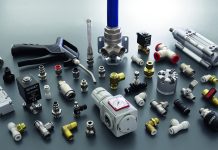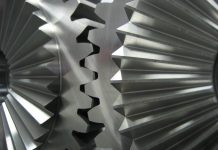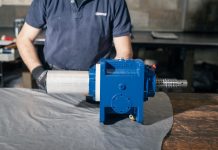The Italian company Fema Srl has been selling for 30 years measuring instruments that find applications in several industrial sectors.
Sale of power transmission components and measuring instruments for both the industrial and mobile sector in the Italian and European market. This is the core activity of Fema Srl, which has celebrated 30 years of activity this year. The company, with headquarters at Biassono (Monza Brianza, Italy), in an industrial area well connected by roads, relies on a staff of six employees, of whom three sale managers and three inside workers dedicated to the warehouse and to the job order management. In 2005, Fema joined the prestigious association EPTDA that groups the most important sector companies on European scale.
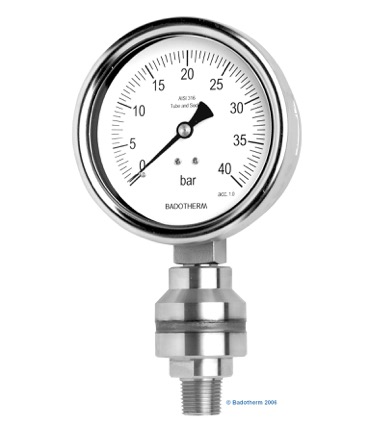
Range variety
The company is exclusive distributor of leader sector enterprises, with outstanding references at international level in manifold applications field, such as chemistry, petrochemical and offshore, shipbuilding, iron and steel industry, energy production, filtering, pharmaceutical and food, engineering and plastic, transport and lifting, earth handling and drilling, building and maintenance, agriculture and forestry. The product range of transmission components includes gear couplings, gear spindles and couplings for winding drums, hydraulic orbital motors and axial piston motors, motor bases, planetary reduction gears. Marco Borghi, managing director of Fema, highlights the sector of measuring instruments for hydraulics, such as bourdon pressure gauges, differential pressure gauges of piston and diaphragm type, chemical seals, flowmeters, bi-metal and inert gas temperature gauges, thermowells, valves and manifolds. «Pressure gauges, in particular, he explains us, are applied on tanks in the food, petrochemical and chemical industry for the stocking up of resins».
“Customized” measuring instruments
The finished product is stocked inside the company. The only “extra” services executed on the instruments concern their calibration, the testing of the old pressure gauges for an eventual reuse and the certification of pressure gauges before their distribution. Besides, they carry out assemblies on extra-components, including chemical seals and valves marketed by Fema itself, and when the customer needs a complete package composed by pressure gauge, seal and valve, they make an assembly and deliver the finished product. «We execute also the filling of pressure gauges with glycerine or with silicone oil, specifies Borghi, and to perform this phase with precision, we make use of an automated machine called “pressure gauger” to ascertain the filling with these fluids». Moreover, before fixing the glass, the dials of pressure gauges can be replaced or, even for small quantities, customized with customers’ logos, upon demand. Concerning pressure measuring instruments, before the final assembly, they undergo on an apposite bench the calibration of the pointer, also differential pressure gauges and flowmeters. The treated products are moved to a large warehouse, to grant a prompt delivery service. The company lives a constant upgrading, thanks to the participation in exhibitions and events, where it collects information and customers’ suggestions, as well. Fema is also oriented to special products that, when requested by customers, are designed in collaboration with them, searching for the suitable solution for their requirements. «Our technical-sales office, explains Borghi, besides taking care of sales, provides also assistance in the phases of product selection, installation and maintenance, too».
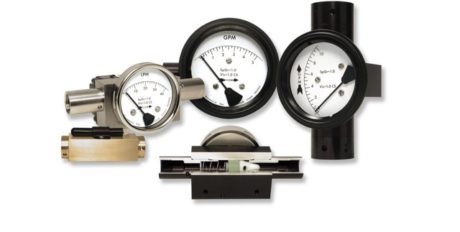
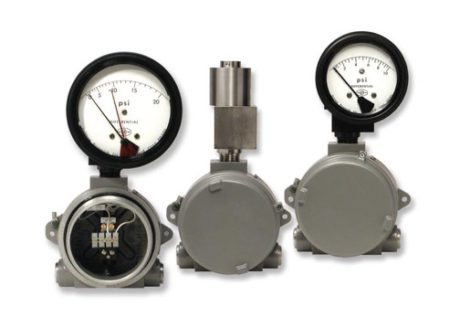
The pressure gauge of the future
Inside pressure gauges, as above said, is inserted glycerine or dampening fluid, like for instance the silicone oil, in order to dampen the vibrations of the plant and eventual strong pulses. Actually, the glycerine or the dampening fluid, smoothen the motion of the pointer and of the gears inside the pressure gauge. On the other hand, in these pressure gauges, both distributed by Fema or by its competitors, if seals are not of high quality, some leaks of glycerine or of silicone oil can take place, due to temperature changes on pressure gauges themselves and on the plants where the pressure gauges are installed. «To prevent this problem – explains Borghi – we have invented a typology of pressure gauge that can operate under critical conditions without the aid of the dampening filling fluid, because it can autonomously dampen eventual pulsations». The solution consists in a pressure gauge equipped with internal springs that dampen vibrations without needing the use of glycerine or fluids. Borghi specifies that, compared to standard pressure gauges, this product novelty, called StabiliZR, is slightly more expensive but it features a longer durability and is granted by Fema for 5 years as “launch offer” to customers. StabiliZR has been recently proposed on the market and will be one of the “most successful” products when the crisis period will end.
Differential pressure gauges
Among Fema products deemed “high-end” it is worth mentioning differential pressure gauges. In the process control, there are various measuring variables concerning pressure, temperature, level and flow. Thanks to the instruments that measure these variables, workers can monitor the condition and the movement of liquids and gases.
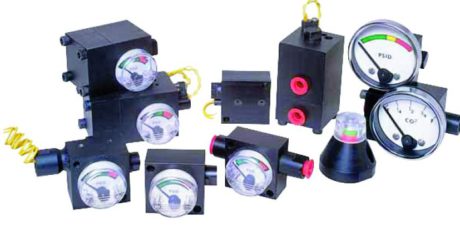
An article by Jim Gill (sales and marketing manager of Orange Research) that Marco Borghi showed us highlights that differential pressure gauges (DP) are included in the category of “special” type pressure gauges, widely used in filter, flow and level. The advantages are numerous: first, they can notable reduce operation errors, then they improve the process efficiency, they protect the expensive equipment, they simplify the operator’s training and, moreover, they reduce the maintenance time. It is worth underlining the operation of these particular pressure gauges that, unlike standard pressure gauges that measure the pressure in a single point of the system, measure the pressure in two points and they show the pressure difference between these two points in a single dial. Differential pressure gauges piston type, suitable for liquids and high pressures, consist of a spring-loaded piston/magnet sensor that is magnetically coupled to a pointer to indicate a pressure difference. A high pressure rated housing is machined from single block, making them highly suitable for high-pressure applications, while the sensing element is completely separated from the indicator, switches or the transmitter. The range of differential pressure gauges includes also Diaphragm types. Thanks to the diaphragm sensing, this typology is suitable for air or gaseous fluids. Built on a design similar to the piston units, but with a diaphragm that separates the high-low pressure ports, without any by-pass. A variety of different diaphragm designs are available for all applications.
The advantages of DP pressure gauges
Still Jim Gill underlines in his article that the most common application for differential pressure gauges is filtering. A filter, in fact, removes the undesired particles or the contaminations, from a gas or fluid system and, when the filter is clogged, the pressure drops and the system becomes inefficient.
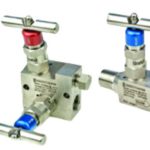
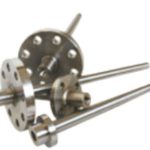
Eliminating the use of two pressure gauges, the error percentage will decrease to the accuracy rated for the DP pressure gauge, and the operator will understand the reading better, without executing any calculation type. The dial of the DP pressure gauge, explains Gill, can be also equipped with a red arc indicating that the filter is obstructed or is getting to be clogged, situation known also as “alarm condition”. This condition will be further highlighted if on the dial of the single DP pressure gauge the words “dirty filter” will appear. This would not be possible by using two separate pressure gauges. Besides, it is possible to add a DP pressure gauge for each switch or transmitter as standard. This implies the advantage of monitoring locally and remotely each instrument: in fact, to remote the signal is useful in plants equipped with many tanks because the operator, from the control unit, can control all of them, testing the filter conditions. The DP pressure gauge features easy and simple reading and this not only reduces errors but it also simplifies the operator’s training. Whenever the DP pressure gauge indicates red, is oriented to “dirty” or receives an electric output from the switch or from the transmitter, an alarm condition occurs. The operator can remediate the situation with an immediate action, carrying out an accurate filter maintenance at the right time.

